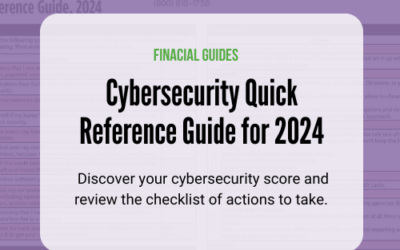Estate Planning
Preserve Your Family’s Legacy – 6 Documents All Wealthy Families Need
Your family’s wealth encompasses much more than just money. You may be surprised at some of the documents we recommend to protect your family’s real wealth, when it comes to estate planning and generational wealth transfer.
In 1926, F. Scott Fitzgerald wrote that the rich are different from you and me, and Ernest Hemingway supposedly retorted, “Yes, they have more money.”
A humorous quote, but the reality is that having more money does make a difference in many ways, especially when addressing intergenerational wealth transfers. The stakes are often higher, mistakes are magnified, and all family members have both the incentive and the means to litigate if things don’t go their way. Below, we discuss six documents that are crucial for protecting your wealth and ensuring the harmony of your family.
1. An Updated Estate Plan
It may astound you just how many people do not have an updated estate plan reflecting their most current desires. Indeed, studies show that up to 68% of Americans may have no estate plan whatsoever. Even if estate plans are updated to reflect the desires of the benefactors, many are often inadequate when it comes to addressing federal and state inheritance or estate taxes.
When we conduct an estate plan review for our clients, we remind them that their estate plan should be reviewed (and possibly updated) at least every three years. Additionally, an estate plan should be updated if there are any changes of circumstances in their family such as a birth, a death, a marriage or a divorce. Also, the estate plan should be updated if one has relocated to a different state, as varying state laws impact probate and taxes.
To be clear, a comprehensive estate plan should include four elements:
- A Revocable Living Trust
- A Will
- Several Durable Powers of Attorney
- An Advanced Health Care Directive
Think of the trust as your “shoebox” and on the cover of this shoebox it says, “Anything you find inside this shoebox should be treated as follows”. The “as follows” are the rules for your trust’s assets. This makes it simple to manage the treatment of your assets because, rather than attempting to create rules for each and every one of them, by placing them in the shoebox, all of the assets are governed by the same set of rules on the cover. If you wanted to treat one asset differently, then you could simply add that exception to the rules on the cover, but those general rules will apply to everything else.
The other benefit of your “trust shoebox” is that it keeps the management and distribution of your assets outside of the courts and keeps everything private, because it avoids probate. On the other hand, if you did nothing or if you just had a will, many of your assets would automatically be forced to go through probate court, which is never private. In addition, probate can sometimes take months or even years to resolve, and it can be expensive. All those things can be avoided by creating a revocable living trust – your shoebox full of your assets with your instructions written on the cover.
The second item in your estate planning toolkit is the will, also referred to as a “pour over will”. Essentially, it has one purpose. In effect it says, “I meant to put all my assets in my shoebox. However, I forgot something, that was a mistake. So, please, pour all these other assets into my shoebox too.”
An example of this may be your car. Certainly, you could have gone to the trouble of titling your car in the name of the trust, but that would be an unnecessary hassle. (By the way, when you title something in the name of the trust, that places that thing in your shoebox.) Instead of worrying about retitling everything in the name of your trust, the “pour over will” does that job for you.
The third item, the durable powers of attorney, gives the legal authority to those you entrust with your assets to do the things you’ve instructed them to do.
For example, you may give them authority to write checks to pay for expenses on your behalf. The authority you grant these individuals can vary greatly from asset to asset, and it may be very specific and limited. It is likely that you will need several powers of attorney documents to accurately describe and limit those activities. The “Durable” part of the power of attorney document indicates that the powers granted in the document are likely valid indefinitely. However, you can limit the duration if appropriate.
Finally, you have the advanced health care directive. While you are alive, this may be one of the most important elements of the trust package. Why? Because it tells everyone what to do when you are physically unable to tell them yourself.
For example, when you are in a comma, rather than having your family or, possibly worse, another non-relative (but interested party) determine your treatment, this document will specify what you want done or not done. You get to make these decisions objectively, at a time when there is no emergency or emotion. You get the opportunity to make rational decisions and, perhaps most importantly, you are relieving your loved ones from these responsibilities, as they may be distraught and may not clearly understand your desired intentions. With an advanced health care directive in place, all of these issues can be mitigated or avoided altogether.
It’s also important not to completely cede control of the estate planning process to the estate planning attorney. Our experience shows that many estate planning attorneys are very busy and have become transactional in nature. This means they may focus more on drafting documents and less on providing creative solutions and strategies. Additionally, they may tend to overdraft and create unnecessary trusts. Instead, we (the advisor) get involved with this very important process and help your attorney draft the documents you need to ensure that your estate is handled in a manner that is consistent with your goals and objectives.
We also recommend obtaining a “planning letter” or some type of executive summary of your estate planning documents. This summary will serve two purposes. First, it allows us to review the documents in advance and provide feedback. Second, it serves as a memorialization of your intent, as clients often cannot remember after the fact what was drafted on their behalf or what their original intent was.
2. Various Trusts, Where Appropriate
While some estate planning attorneys may draft unnecessary trusts, trusts can be a very important tool in the estate planning process for those with significant wealth. With the expiration of the Tax Cut and Jobs Act looming (sunsetting in 2025), trusts may become more relevant in addressing a potentially decreased lifetime exclusion.
Trusts come in various forms and can achieve many goals, but they also have their limitations. Truly understanding your situation, including your finances, concerns, and goals, is essential to creating the appropriate trusts.
Having said that, it is beneficial for you to be aware of the benefits of different types of trusts, such as:
- Irrevocable Life Insurance Trust (ILIT)
- Qualified Personal Residence Trust (QPRT)
- Spousal Lifetime Access Trust (SLAT)
- Grantor Retained Annuity Trust (GRAT)
We can discuss these options in more detail to ensure your estate plan is tailored to your specific needs and goals.
3. Personal Property Memorandum
In most instances, it makes sense to draft a separate personal property memorandum designating to whom your personal property, such as jewelry, automobiles, and collectibles, should go. Because estate plans are governed by state law, it’s important to know that some states do not recognize a personal property memorandum. We ensure to understand the laws of your jurisdiction and guide you accordingly.
4. Legacy Letter
There are benefits to drafting a legacy letter for your heirs. While this document is not necessarily legally binding, it focuses more on the emotional aspects of the relationship outside of the will and trust. A legacy letter can be very helpful in explaining certain bequests and communicating your wishes to your heirs once you have passed. It can be particularly useful if there is an unequal distribution of assets or wealth at your passing. Additionally, it is a great way to communicate your last hopes and wishes.
5. Family Governance Plan
As with all the documents we’ve discussed, a family governance plan should be in place before you need it. This document can also be thought of as a conflict management policy, outlining roles and responsibilities in the event of an emergency and addressing how to resolve conflicts within the family. These conflicts can arise over money, family investments, the family vacation home, or any other item that could trigger dissension. You would be surprised!
In addition, you may want to address the “family mission” and any philanthropic efforts that should be continued. It is also crucial to outline the “next steps” so that everyone understands their role if the founders are incapacitated or otherwise compromised or unavailable. Some call this a “just in case” plan or a “person in charge” (PIC) plan, but regardless of the name, there should be a contingency plan in place. This way, you can avoid jockeying for position, power grabs, infighting, coalition formation, and hard feelings during a crisis.
6. Succession Plan for the Family Business
If there is a family business, then it is crucial to have a succession plan in place, particularly if several members of the family are working in the business. Too often, everything is handled very informally for decades, leading to misunderstandings that can create significant issues between adult children.
You need to address some of these potentially touchy issues and formalize as much as possible while everyone is healthy, willing to work together, and the lines of communication are still open. This way everyone understands how their future will be impacted and what is expected of them when the inevitable succession takes place.
In conclusion, governing a wealthy family requires a lot of forethought and counsel from outside experts. It’s beyond just making the money—that part is behind you. The bigger challenge is setting up the roadmap so that your wealth and the harmony of your family can continue for the next generations. Hopefully, the documents discussed above will help you to lay out a thoughtful plan for your future.
Debra Taylor, CPA/PFS, JD, CDFA, writes on tax and retirement planning for Horsesmouth, an independent organization providing insight into the critical issues facing financial professionals and their clients.
SERVICES WE OFFER RELATED TO THIS TOPIC
The information contained in this post is for general use and educational purposes only. However, we do offer specific services to our clients to help them implement the strategies mentioned above. For specific information and to determine if these services may be a good fit for you, please select any of the services listed below.
The 4x4 Financial Independence Plan ℠
The Smart Legacy Plan Organizer ℠
The Smart Caregiver's Planner & Tax Guide System ℠
Coaching and Consulting

Need More Information?
If you have any questions regarding this article, please don’t hesitate to reach out to us at [email protected]. Alternatively, you can schedule a complimentary 15-minute consultation to inquire further and determine whether we align with your needs and expectations. We look forward to assisting you!
Reduce Taxes by Using the Best Cryptocurrency Account Method
Tax PlanningBradford Tax InstituteLet’s say you purchased one Bitcoin 14 months ago for $15,000 and another Bitcoin...
Savvy Cybersecurity Quick Reference Guide 2024
Financial GuidesIn today’s digital world, cybersecurity is a growing concern. With data breaches, scams, and identity...
Cybersecurity Business Protection Checklist 2024
Financial Guides In today's digital landscape, safeguarding your business from cybersecurity threats is more crucial...





